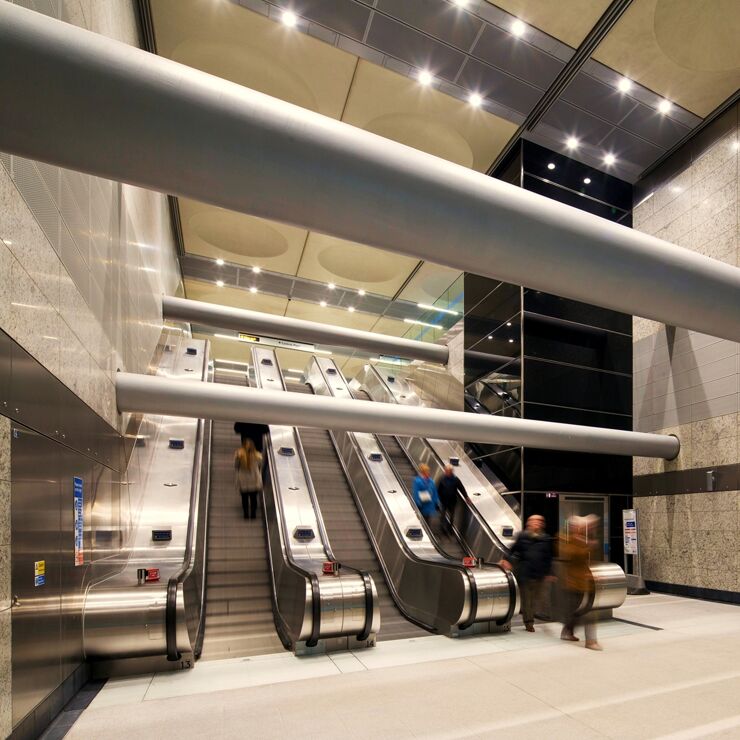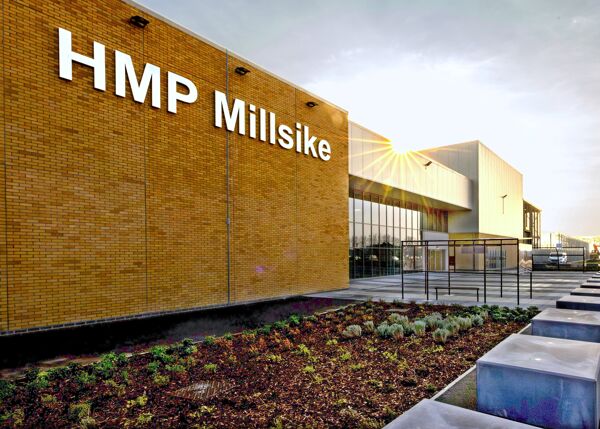
NEC Users’ Group platinum member Transport for London (TfL) has used NEC contracts to deliver a complex and challenging upgrade to the city’s third busiest underground railway station. Completed in August 2019, the £700 million Victoria Station upgrade project involved doubling the size of the subterranean station and providing step-free access to the Circle, District and Victoria ‘tube’ lines.
TfL subsidiary London Underground let the main construction works in May 2010 to a joint venture of contractors Taylor Woodrow and Bam Nuttall under an NEC3 Engineering and Construction Contract ECC Option C (target contract with activity schedule). The contractors used the back-to-back NEC3 Engineering and Construction Subcontract, again with option C, for all major subcontracts, while lead designer Mott MacDonald and other consultants were engaged under the NEC3 Professional Services Contract (PSC).
The works involved construction of a new north underground ticket hall, expansion of the existing south underground ticket hall, excavation of 300m of passenger tunnels and provision of nine new escalators and eight new lifts. There were also general improvements to all parts of the station, including improved access to the adjacent Victoria mainline station. The main underground structures were built using reinforced concrete and all public areas were clad with high quality robust materials such as granite, laminated glass, stainless steel, and vitreous-enamelled and polyester-powder-coated steel.
Collaborative working
London Underground senior project manager Helen Wright says the nine-year project was a major logistical and technical challenge. ‘In addition to keeping the station operational for up to 300,000 daily users, we had to carry out the works in a highly congested urban environment with difficult ground conditions. For example, the new access tunnels were in fast-moving gravels and sands less than 30cm away from the Victoria line and within 60cm of the District and Circle lines. As such a total of 3,000m3 of ground had to be excavated by hand to ensure stability and protection of nearby assets.’
Wright says London Underground chose NEC because it promotes collaborative working in a multi-disciplinary team environment and provides the flexibility required to deliver complex high-profile schemes such as this. ‘The ethos of the contracts is to promote active project management through early warnings and risk-reduction meetings to address issues as soon as they arise. All parties act need to act and reply within defined timescales, ensuring issues are resolved and agreed effectively.’
She cites examples of early warnings that led to compensation events as unexpected ground obstructions found during excavation of the north ticket hall, and the discovery of redundant services and asbestos during modernisation of the existing station. ‘Through NEC’s collaborative approach and robust project management procedures, we were able to reduce the impact of these compensation events on the programme and budget to an absolute minimum.’
Cost and programme certainty
According to Wright the ECC Option C target-cost contract contained a combination of mechanisms to incentivise cost and programme savings to help achieve cost certainty and to protect London Underground against cost and programme overruns. ‘It incentivised the contractor to keep the actual cost below the target and therefore earn a higher fee. There was also a gain-share, pain-share mechanism that varied with proximity of the final actual cost to the final target cost. This further incentivised the contractor to produce savings against the target cost.’
For example, for the underpass below the District and Circle lines that links the two ticket halls, she says a series of design workshops and collaborative interactions enabled the project team to cut the time required for the enabling works from 17 weekend closures to a single six-day blockade. ‘The remainder of the underpass construction was carried out from outside the existing track structure. A unique system of needles were installed during the enabling works, underpinning the existing District and Circle lines. Careful monitoring of the track alignments enabled excavation to be undertaken safely while trains continued to run.’
Wright says another key to the project’s success was the co-location of all members of the project team in the same offices from the very beginning. ‘This enhanced relationships and created a “best for project” ethos, which in turn led to successful delivery of what was a very complex project. Overall, the use of innovative design and construction techniques and the high quality of the finished works makes this an outstanding example of how to deliver a major multi-disciplinary project in a densely populated urban environment while minimising impact on local stakeholders.’
Benefits of using NEC
- NEC promotes collaborative working in a multi-disciplinary team environment and provides the flexibility required to deliver complex high-profile schemes.
- NEC promotes active project management through submission of early warnings and risk-reduction meetings to address issues contemporaneously.
- NEC target-cost option has a combination of mechanisms to incentivise cost and programme savings to help achieve cost certainty and protect clients against cost and programme overruns.
- The construction industry’s familiarity with NEC contracts means all parties understand their obligations and risks, helping to ensure that projects are delivered successfully.




